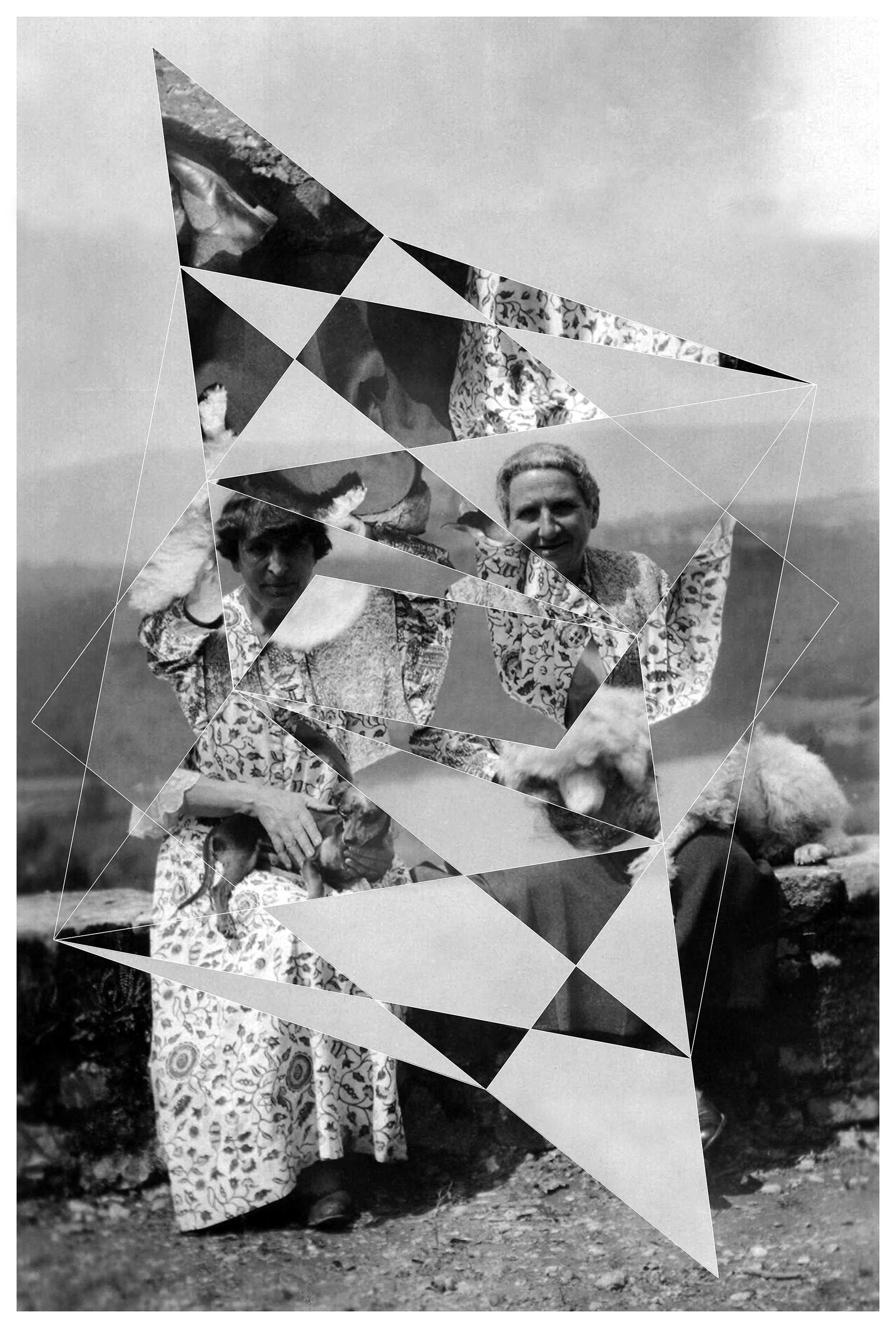
Gertrude Stein (1874–1946) was an American writer and poet born to wealthy German-Jewish immigrants. Stein attended Radcliffe College and later enrolled at Johns Hopkins University to study medicine. Before receiving a degree, Stein left school and moved to Paris in 1903. Alice B. Toklas (1877–1967) was an American writer from an upper middle class Jewish family from San Francisco, California. Toklas moved to Paris in 1907 and met Gertrude Stein. The two became intimate partners and stayed together until Stein’s death in 1946. On Saturday evenings, their home at 27 rue de Fleurus in the 6th arrondissement on the Left Bank, soon became an influential gathering spot. They attracted writers and painters of the American and European avant-garde to talk about modernism, literature, and art. The salon was sometimes referred to as the literary equivalent to cubist paintings techniques. Stein became a mentor, critic, and guru for many artists and writers, some of which included Pablo Picasso, Ernest Hemingway, F. Scott Fitzgerald, Guillaume Apollinaire, Mildred Aldrich, Francis Picabia, Ezra Poun, Elisabeth de Gramont, Henri Matisse, Carl Van Vechten, and Juan Gris among many others and became close to writers Djuana Barnes and Mina Loy, as well as patrons Mabel Dodge and Mildred Aldrich. The walls of the house were filled with famous paintings from the Stein’s collection from floor to ceiling. Toklas and Stein received hundreds of visitors for these events. Toklas became the de facto hostess for the wives and girlfriends because Stein would give feedback to the celebrated male artists at the time. Toklas became Stein’s typist and editor, and her manager/publisher/agent. Stein’s first book, Three Lives, was published in 1909, followed by Tender Buttons in 1914. Stein’s writing received considerable interest from other artists and writers but did not find a wide audience. Despite being of Jewish descent, Stein remained in France throughout World War II and voiced support for the Vichy regime, believing her wealth and notoriety would let her avoid persecution. When Stein passed away in 1946 due to inoperable cancer, her substantial art collection was bequeathed to Toklas. But because their relationship had no legal recognition at the time, Stein’s relatives eventually took hold of the more valuable artworks, leaving Toklas impoverished and unemployed. Toklas’s own writings include articles for the New Republic and the New York Times and three books: The Alice B. Toklas Cookbook, Aromas and Flavors of Past and Present, and What Is Remembered. The latter was an autobiography but ends at the death of her lover, Stein.
SOURCES
https://en.wikipedia.org/wiki/Gertrude_Stein
https://en.wikipedia.org/wiki/Alice_B._Toklas
https://en.wikipedia.org/wiki/27_rue_de_Fleurus
http://brbl-archive.library.yale.edu/exhibitions/cvvpw/gallery/steintoklas1.html
http://www.literarytraveler.com/articles/gertrude-stein-paris/